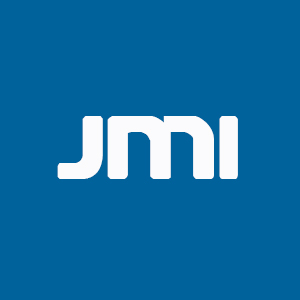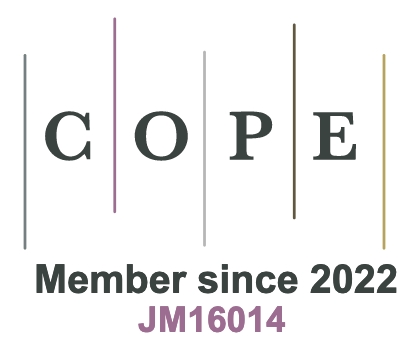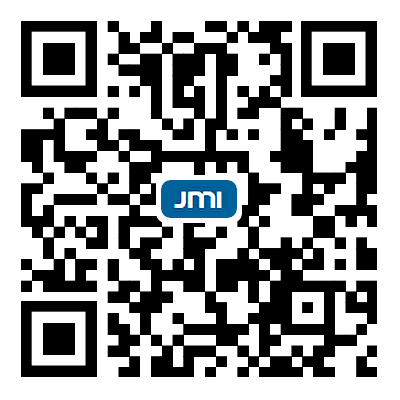REFERENCES
1. Rao, Z.; Tung, P. Y.; Xie, R.; et al. Machine learning-enabled high-entropy alloy discovery. Science 2022, 378, 78-85.
2. Chen, J.; Zhang, Y.; Luan, J.; et al. Prediction of thermal conductivity in multi-component magnesium alloys based on machine learning and multiscale computation. J. Mater. Inf. 2025, 5, 22.
3. Yuan, Y.; Sui, Y.; Li, P.; Quan, M.; Zhou, H.; Jiang, A. Multi-model integration accelerates Al-Zn-Mg-Cu alloy screening. J. Mater. Inf. 2024, 4, 23.
4. Chen, C.; Zuo, Y.; Ye, W.; Li, X.; Deng, Z.; Ong, S. P. A critical review of machine learning of energy materials. Adv. Energy. Mater. 2020, 10, 1903242.
5. Hu, M.; Tan, Q.; Knibbe, R.; et al. Recent applications of machine learning in alloy design: a review. Mater. Sci. Eng. R. Rep. 2023, 155, 100746.
6. Wen, C.; Zhang, Y.; Wang, C.; et al. Machine learning assisted design of high entropy alloys with desired property. Acta. Mater. 2019, 170, 109-17.
7. Li, S.; Li, S.; Liu, D.; Zou, R.; Yang, Z. Hardness prediction of high entropy alloys with machine learning and material descriptors selection by improved genetic algorithm. Comput. Mater. Sci. 2022, 205, 111185.
8. Zhang, Y.; Ren, W.; Wang, W.; et al. Interpretable hardness prediction of high-entropy alloys through ensemble learning. J. Alloys. Compd. 2023, 945, 169329.
9. Altmann, A.; Toloşi, L.; Sander, O.; Lengauer, T. Permutation importance: a corrected feature importance measure. Bioinformatics 2010, 26, 1340-7.
10. Darst, B. F.; Malecki, K. C.; Engelman, C. D. Using recursive feature elimination in random forest to account for correlated variables in high dimensional data. BMC. Genet. 2018, 19, 65.
12. Shlens, J. A tutorial on principal component analysis. arXiv 2014, arXiv:1404.1100. https://doi.org/10.48550/arXiv.1404.1100. (accessed 19 Jun 2025).
13. Zhang, H.; Fu, H.; He, X.; et al. Dramatically enhanced combination of ultimate tensile strength and electric conductivity of alloys via machine learning screening. Acta. Mater. 2020, 200, 803-10.
14. Jiang, L.; Fu, H.; Zhang, H.; Xie, J. Physical mechanism interpretation of polycrystalline metals’ yield strength via a data-driven method: a novel Hall–Petch relationship. Acta. Mater. 2022, 231, 117868.
15. Gupta, S.; Gupta, A. Dealing with noise problem in machine learning data-sets: a systematic review. Procedia. Comput. Sci. 2019, 161, 466-74.
16. Mohammed, R.; Rawashdeh, J.; Abdullah, M. Machine learning with oversampling and undersampling techniques: overview study and experimental results. In 2020 11th International Conference on Information and Communication Systems (ICICS), Irbid, Jordan. Apr 07-09, 2020. IEEE; 2020. pp. 243-8.
17. Li, K.; Persaud, D.; Choudhary, K.; DeCost, B.; Greenwood, M.; Hattrick-Simpers, J. Exploiting redundancy in large materials datasets for efficient machine learning with less data. Nat. Commun. 2023, 14, 7283.
18. Chen, S.; Cao, H.; Ouyang, Q.; Wu, X.; Qian, Q. ALDS: an active learning method for multi-source materials data screening and materials design. Mater. Design. 2022, 223, 111092.
19. Frazier, P. I. Bayesian optimization. In: Gel E, Ntaimo L, Shier D, Greenberg HJ, editors. Recent advances in optimization and modeling of contemporary problems. INFORMS; 2018. pp. 255-78.
20. Shahriari, B.; Swersky, K.; Wang, Z.; Adams, R. P.; de Freitas, N. Taking the human out of the loop: a review of Bayesian optimization. Proc. IEEE. 2016, 104, 148-75.
21. Pedregosa, F.; Varoquaux, G.; Gramfort, A.; et al. Scikit-learn: machine learning in Python. J. Mach. Learn Res. 2011, 12, 2825-30. https://www.jmlr.org/papers/volume12/pedregosa11a/pedregosa11a.pdf?source=post_page. (accessed 19 Jun 2025).
22. Chen, T.; Guestrin, C. XGBoost: a scalable tree boosting system. arXiv 2016, arXiv:1603.02754. https://doi.org/10.48550/arXiv.1603.02754. (accessed 19 Jun 2025).
23. Prokhorenkova, L.; Gusev, G.; Vorobev, A.; Dorogush, A. V.; Gulin, A. CatBoost: unbiased boosting with categorical features. arXiv 2017, arXiv:1706.09506. https://doi.org/10.48550/arXiv.1706.09516. (accessed 19 Jun 2025).
24. Jo, J. M. Effectiveness of normalization pre-processing of big data to the machine learning performance. J. Korea. Inst. Electron. Commun. Sci. 2019, 14, 547-52.
25. Wong, T. Performance evaluation of classification algorithms by k-fold and leave-one-out cross validation. Pattern. Recognit. 2015, 48, 2839-46.
26. Fushiki, T. Estimation of prediction error by using K-fold cross-validation. Stat. Comput. 2011, 21, 137-46.
27. Ye, Y.; Li, Y.; Ouyang, R.; Zhang, Z.; Tang, Y.; Bai, S. Improving machine learning based phase and hardness prediction of high-entropy alloys by using Gaussian noise augmented data. Comput. Mater. Sci. 2023, 223, 112140.
28. Ma, J.; Cao, B.; Dong, S.; et al. MLMD: a programming-free AI platform to predict and design materials. npj. Comput. Mater. 2024, 10, 1243.
29. Kano, S.; Yang, H.; Suzue, R.; et al. Precipitation of carbides in F82H steels and its impact on mechanical strength. Nucl. Mater. Energy. 2016, 9, 331-7.
30. Williams, C. A.; Hyde, J. M.; Smith, G. D.; Marquis, E. A. Effects of heavy-ion irradiation on solute segregation to dislocations in oxide-dispersion-strengthened Eurofer 97 steel. J. Nucl. Mater. 2011, 412, 100-5.
31. Haertling, G. H. Ferroelectric ceramics: history and technology. J. Am. Ceram. Soc. 1999, 82, 797-818.
32. Green, M. A.; Ho-Baillie, A.; Snaith, H. J. The emergence of perovskite solar cells. Nature. Photon. 2014, 8, 506-14.
33. Correa-Baena, J. P.; Saliba, M.; Buonassisi, T.; et al. Promises and challenges of perovskite solar cells. Science 2017, 358, 739-44.
34. Chen, X.; Wang, Q.; Cheng, Z.; et al. Direct observation of chemical short-range order in a medium-entropy alloy. Nature 2021, 592, 712-6.
35. Zhang, R.; Zhao, S.; Ding, J.; et al. Short-range order and its impact on the CrCoNi medium-entropy alloy. Nature 2020, 581, 283-7.
36. Shi, P.; Li, R.; Li, Y.; et al. Hierarchical crack buffering triples ductility in eutectic herringbone high-entropy alloys. Science 2021, 373, 912-8.
37. Senkov, O.; Senkova, S.; Woodward, C. Effect of aluminum on the microstructure and properties of two refractory high-entropy alloys. Acta. Mater. 2014, 68, 214-28.
38. Guo, S. Phase selection rules for cast high entropy alloys: an overview. Mater. Sci. Technol. 2015, 31, 1223-30.
39. Zhang, Y.; Wen, C.; Wang, C.; et al. Phase prediction in high entropy alloys with a rational selection of materials descriptors and machine learning models. Acta. Mater. 2020, 185, 528-39.








